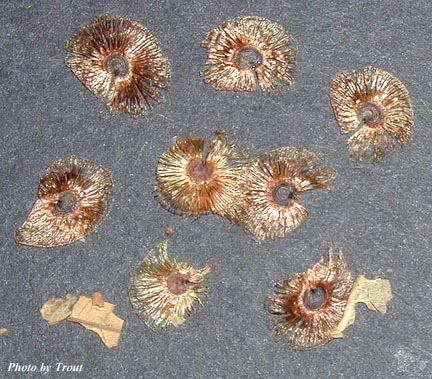Ayahuasca: alkaloids, plants & analogs
Section 3 : Part 2 :
Other possibilities
Several plants are suggested by the literature but less is known concerning their safety.
Dictyoloma incanescens DC.
(Collected in winter near Rio de Janeiro.)
0.04% of 5-MeO-DMT was reported to be the sole alkaloid isolated from dry bark.
Pachter et al. 1959.
This unfortunately appears in the literature as 0.4% (which is a typographical error).

Dictyoloma incanescens seeds
Dutaillyea drupacea
(From New Caledonia)
5-MeO-DMT was reported to be the sole alkaloid in the leaves at 0.04% but it was absent from the trunk-bark.
Baudouin et al. 1981.
Vepris ampody H. Perr.
0.224% DMT was reported in the leaf. It was accompanied by kokusagine, dimethoxy-2,4-methyl-10-acridone, evoxanthine and phenacetamide.
Kan-Fan et al. 1970
[The first of the additional compounds seems to lack any pharmacological or toxicological evaluation; the second may be antagonistic to Ditran.]
I might comment that while 5-MeO-DMT is not commonly or generally thought of as a traditional ayahuasca component, it is the preferred tryptamine component in ayahuasca analogs among many modern day shamanic practitioners in technologically based societies. It is also frequently the MAJOR active component in many South American snuffs derived from Virola and in a minority of the snuffs derived from Anadenanthera.

